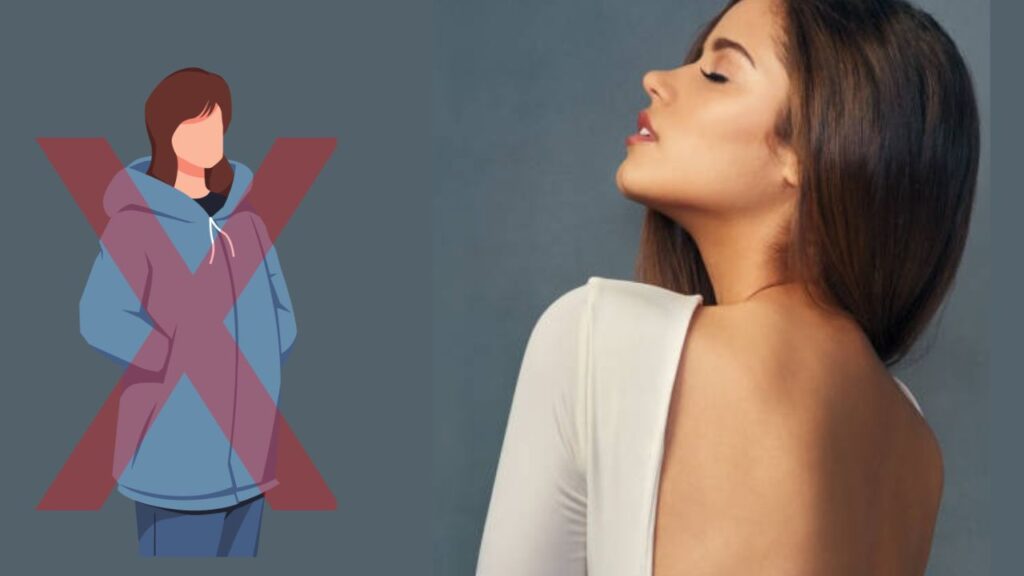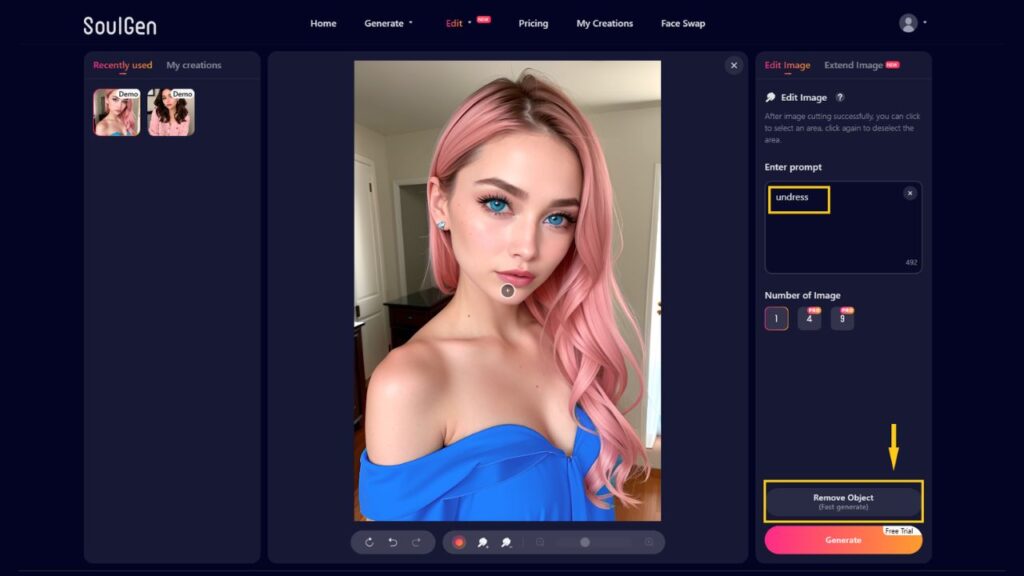AI Undress Tools: Explore & Understand The Technology
Is it possible that the digital veil of modesty is beginning to fray, offering glimpses into realms once shielded by layers of cloth? The advent of AI-powered "undressing" tools presents a fascinating, yet troubling, intersection of technological innovation and ethical considerations, forever changing our relationship with images and privacy.
The digital landscape is witnessing the rapid proliferation of artificial intelligence (AI) tools capable of manipulating images in unprecedented ways. Among these, a category of applications centered around the removal of clothing from photographic subjects has emerged, raising a storm of debate and concern. These tools, often referred to as "undress" or "deepnude" applications, leverage advanced AI algorithms to digitally alter photographs, effectively removing clothing and generating images of individuals in a state of undress. While proponents tout the technological marvel and potential applications, the ethical implications and potential for misuse are undeniable.
The allure of such technology lies in its perceived simplicity and accessibility. Several platforms and applications offer varying levels of functionality, with some boasting user-friendly interfaces and intuitive controls. For instance, tools like "Undressher" and "Unclothy" leverage AI to identify and remove clothing from images, allowing users to customize the resulting image with options such as altering breast size or selecting different "cloth types" (if the user chooses to re-clothe the subject). Others, like "Slazzer 3.0" and various "AI clothes remover" tools, offer a streamlined approach, enabling users to upload an image and automatically remove clothing. Some, like "Undress VIP," even claim to offer this service for free.
- Explore Dj Tillu Kgf No Results Find Movies Online
- Movierulz Latest Telugu Tamil Bollywood Movies 2025 Watch Free
The functionality of these tools typically involves several key steps. First, the user uploads an image. Then, the AI algorithms analyze the image, identifying areas of clothing and body features. Finally, the algorithm attempts to "remove" the clothing, often by replacing it with a generated approximation of the underlying skin or by swapping the removed clothing for another outfit chosen by the user. These tools are not just a matter of simple image editing; they delve into the realm of realistic photo manipulation, potentially creating visuals that appear authentic.
The underlying technology driving these tools is rooted in deep learning, a subset of artificial intelligence. The AI models are trained on vast datasets of images, allowing them to learn patterns and relationships between clothing, body shapes, and skin tones. This training process enables the AI to "understand" where clothing exists in an image and to extrapolate what lies beneath. The advancements in AI have dramatically improved the accuracy and realism of these manipulations, making the results increasingly convincing.
The potential applications of such technology are varied. Some envision uses in fashion design, allowing designers to visualize how garments might look on different body types or in virtual fitting rooms. Others suggest applications in the entertainment industry, for tasks such as creating concept art or special effects. Still others believe it could be used to help with the art of photography, as tools for professional photographers or casual users.
- Vegamovies Guide Watch Stay Safe In 2024 Alternatives
- Unveiling The Secrets Discovering Vega Content More
However, these potential benefits are overshadowed by serious ethical concerns. The most prominent is the potential for misuse, particularly the creation and distribution of non-consensual, intimate images. This raises significant questions about consent, privacy, and the potential for harassment and exploitation. The ability to generate realistic nude images of individuals without their knowledge or permission can lead to severe emotional distress and reputational damage.
Consider the following scenario. A photograph of an individual is taken, perhaps at a public event or from a social media profile. Using an "undress" tool, that image is manipulated to depict the individual in a state of undress. This manipulated image is then disseminated online. The victim of this manipulation may experience extreme embarrassment, shame, and anxiety. Their personal and professional lives could be severely impacted. This is just one of many negative results associated with the use of these tools.
The potential for revenge porn, the non-consensual sharing of explicit images, is another major concern. These tools could be utilized by malicious actors to create and spread intimate images of their targets, causing significant harm. The ease with which these manipulated images can be created and shared online amplifies the potential for damage and creates a persistent threat to privacy.
Furthermore, the use of these tools raises concerns about the blurring lines between reality and fiction. As AI-generated images become more realistic, it becomes increasingly difficult to distinguish between authentic photographs and manipulated content. This can lead to distrust and erode the credibility of visual information, potentially impacting journalism, legal proceedings, and other areas where visual evidence is crucial. It is important to emphasize that these tools can easily be used to create false narratives and spread misinformation.
The impact of these tools extends beyond individual victims. They have the potential to exacerbate existing societal biases and stereotypes. For example, by focusing on the sexualized portrayal of individuals, these tools could reinforce harmful gender roles and contribute to a culture of objectification. They could also be used to target marginalized groups and amplify existing inequalities.
The legal and regulatory landscape surrounding these tools is still evolving. Many countries are grappling with how to address the challenges posed by AI-generated content and the potential for its misuse. Some jurisdictions are considering or enacting legislation to criminalize the creation and distribution of non-consensual, manipulated images. The definition of consent, and the legal boundaries of image manipulation, are also being redefined.
The question remains: How can we harness the potential benefits of AI image manipulation tools while mitigating the risks? One approach is to focus on technological safeguards, such as developing tools to detect and identify AI-generated images. This could include watermarking, forensic analysis, and other methods to distinguish between authentic and manipulated content. Another approach is to promote ethical guidelines and best practices for the use of these tools. This includes promoting transparency about the use of image manipulation technology and emphasizing the importance of consent.
Education is key. Raising public awareness about the existence and capabilities of these tools is crucial. Individuals need to understand the risks and potential for misuse, as well as how to protect their privacy and online reputation. This includes teaching people how to identify manipulated images and how to report instances of non-consensual image distribution.
Moreover, it is essential to foster a culture of respect and responsibility in the digital space. This involves promoting ethical behavior and encouraging individuals to consider the potential consequences of their actions online. This can only be achieved by making the ethical and legal boundaries related to the digital world more clear and widely known.
The use of AI in the image editing world goes beyond the topic of "undressing". Tools like "Pincel AI" provide users with options like image background removal, object removal, and image enhancement, all aimed at streamlining the editing process. These tools also provide features that a professional retoucher would require, like understanding of human anatomy, or proper lighting of an image, and ability to view the perspective of the body in space.
The rise of AI-powered "undressing" tools presents a complex dilemma. While the technology itself is impressive, the potential for misuse and the ethical implications are considerable. Finding a balance between technological innovation and ethical responsibility is crucial to ensuring a safe and respectful digital environment. As AI continues to advance, it is essential to address the potential risks and work towards solutions that protect privacy, prevent harm, and promote ethical behavior.
Here's a table that delves deeper into the functionalities and characteristics of the AI tools mentioned in this article:
| Tool Name | Key Features | Ethical Considerations |
|---|---|---|
| Undressher | AI-powered undressing of photos Customization options (boob size, ass size, cloth type) Two modes: Simple and Advanced | Potential for non-consensual image generation Risk of misuse and distribution of intimate images Privacy concerns |
| Unclothy | AI-driven undressing of photos Automatic detection and removal of clothing Generation of deepnude images | High potential for malicious use Risk of revenge porn Serious privacy violations |
| Slazzer 3.0 | Free online AI tool Can remove clothes from images Simple interface | Same ethical concerns as other tools Potential for non-consensual image creation Risk of exploitation |
| Undress AI Tool (various) | Free deepnude app Seamlessly undresses characters Powerful photo undresser tool | Significant ethical concerns regarding consent Potential for harm and emotional distress Increased risk of privacy violations |
| ClothOff AI Generator | Accepts character descriptions as prompts Generates images based on prompts (gender, body type, pose, removal of clothing) Unique image rendering | High risk of non-consensual image creation Potential for creating deepfakes Risk of misuse and reputational damage |
The following table gives a simple overview of the AI capabilities used, the tool name and a short description of the functionalities. The table also lists websites, where these tools can be found for further reading.
| AI Capability | Tool Name | Description | Website Link |
|---|---|---|---|
| AI-Powered Image Manipulation | Undressher | Allows users to undress people in photos, offering customization options. | [Undressher - if link available] |
| AI-Driven Clothing Removal | Unclothy | Automatically detects and removes clothing to generate deepnude images. | [Unclothy - if link available] |
| AI-Based Image Editing | Slazzer 3.0 | Offers online tools for removing clothing from images. | [Slazzer - if link available] |
| Deepnude Image Generation | Undress AI Tools (various) | Specialized in seamlessly undressing characters in images. | [Undress AI - if link available] |
| AI Prompt-Based Image Generation | ClothOff AI Generator | Generates unique images based on user prompts, including the removal of clothing. | [ClothOff AI - if link available] |



Detail Author:
- Name : Leonora Wisoky
- Username : jgutkowski
- Email : monty.nikolaus@hauck.com
- Birthdate : 2004-05-02
- Address : 1587 Ebba Union Suite 021 Port Freeda, NY 42352-5782
- Phone : 878-431-4706
- Company : Reichel-Lehner
- Job : Operating Engineer
- Bio : Id est laborum repellat nobis. Alias vel et laudantium eum. Voluptatem quod sed repudiandae quaerat nemo eum consequuntur.
Socials
instagram:
- url : https://instagram.com/bechtelare
- username : bechtelare
- bio : Accusantium magnam laboriosam porro non consequatur quos non. Et enim est qui maxime est.
- followers : 4451
- following : 1469
linkedin:
- url : https://linkedin.com/in/ebechtelar
- username : ebechtelar
- bio : Ut repellendus aut ut odio.
- followers : 4937
- following : 1605
facebook:
- url : https://facebook.com/elwyn653
- username : elwyn653
- bio : Nostrum dolore deserunt modi non. Voluptatum error delectus incidunt doloribus.
- followers : 3544
- following : 1120